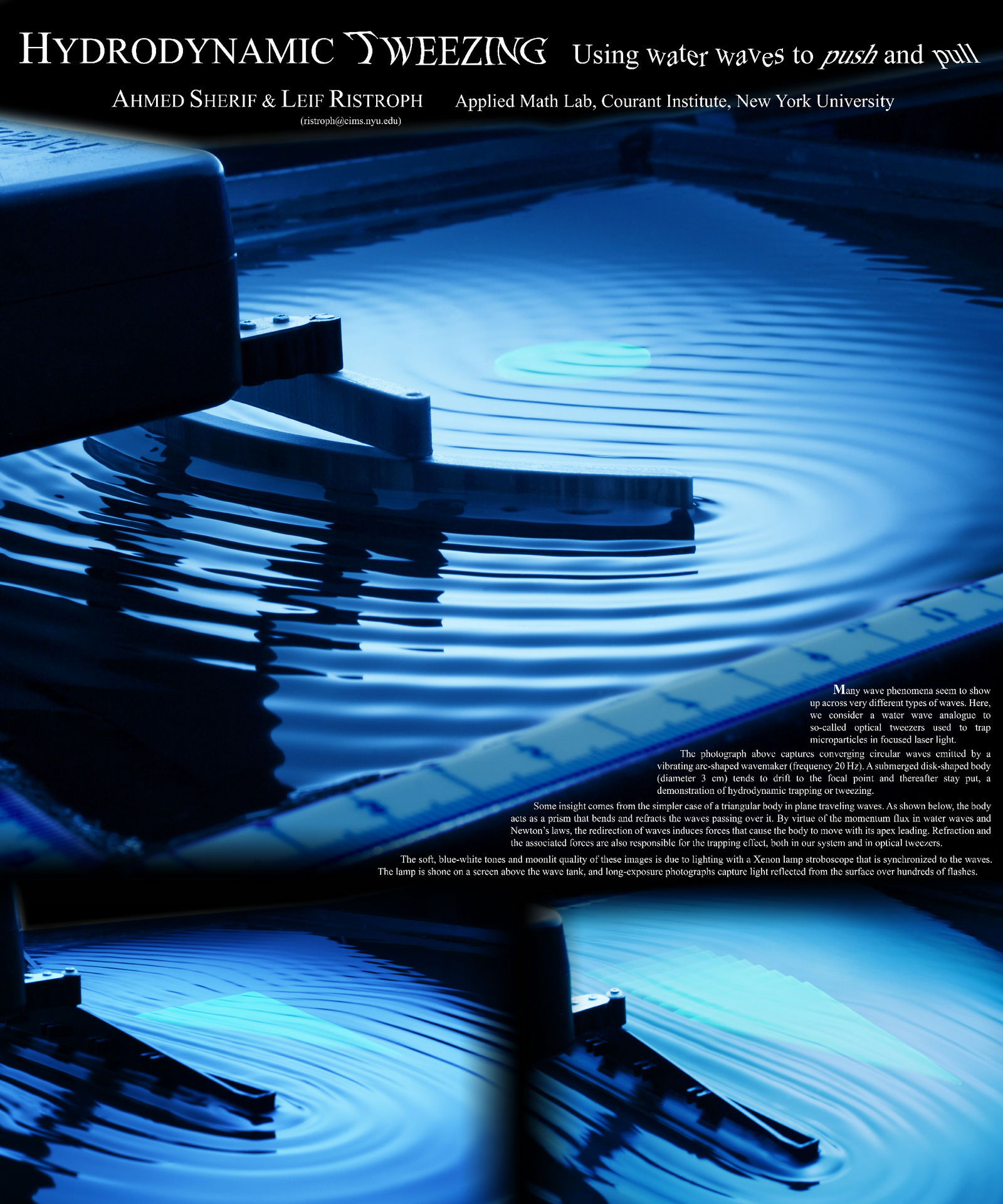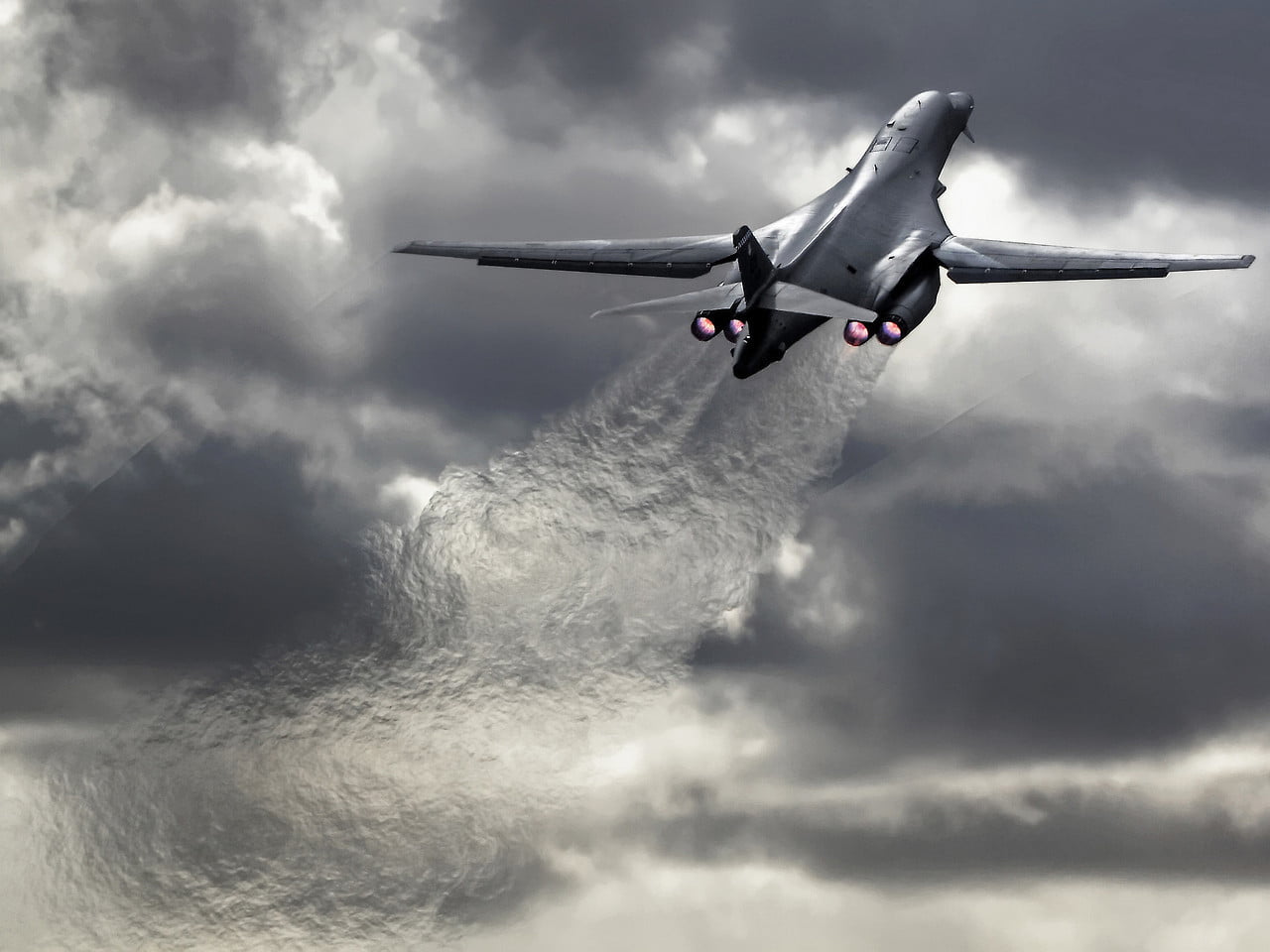It may have been 10 years since the BBC filmed the first timelapse of a growing brinicle, but the footage is just as amazing now as it was then! This video gives you the behind-the-scenes story of what it took to capture this natural wonder under the Antarctic ice. It’s incredible to see the shots of sinking brine streaming off the brinicles, too. The difference in density (and thus refractive index) of the brine and the ocean water is substantial enough that your eye can actually pick them out as separate fluids. I once went snorkeling in an area with similarly varied salinity and it was completely bizarre watching everything suddenly go wavy and blurry as I swam. (Image and video credit: BBC)
Tag: refraction

Seeing Through
Often researchers are interested in flows around and between objects, but seeing those flows is a challenge in a crowded field of view. One useful trick for this problem is matching the refractive index of your objects and the fluid they’re immersed in. Here we see the glass beads in a container seemingly disappear when a mixture of water and ammonium thiocyanate is poured in. Now the researchers can use many different visual diagnostic techniques to observe the interior flow! (Image credit: Datta Lab, Princeton University, source)

Superior Mirage
This photograph of a ship seemingly floating far above the water is not some Photoshop fakery; it’s physics creating the illusion. It’s an example of what’s known as a superior mirage — superior because the mirage appears above the object’s actual location, unlike the mirages you see above the road on a hot day.
In this case, the air layer near the water is cold — colder than the air above it, thanks to a temperature inversion. Cold air is denser and has a higher index of refraction, so light traveling through it gets bent downward. To a far off observer, this downward bend makes objects appear higher in altitude than they actually are. The effect is most common in polar regions, where the right conditions can actually allow images of objects completely below the horizon! (Image credit: D. Morris; via The Guardian; submitted by Alec)

The World in a Droplet
Capturing refracted images in a droplet is a popular pastime among high-speed photographers, and in this solo Slow Mo Guy outing, we get to see that process in video. Physically, the subject is a simple drop of water, which on impact with a pool, rebounds into a Worthington jet and ejects one or more droplets from its tip. Despite hundreds of years of study, it’s still a joy to watch, especially at 12,000 frames per second.
It’s also not the easiest image to capture, and one thing I rather enjoy about this video is how it gives you a sense of the trial and error involved in capturing just the right view. Even without having to worry about the timing issues, there is a lot of fiddling with lenses, focus, lights, and positioning — something familiar not just to photographers and videographers but to many researchers as well! (Image and video credit: The Slow Mo Guys)

Captured by Waves
Acoustic levitation and optical tweezers both use waves — of sound and light, respectively — to trap and control particles. Water waves also have the power to move and capture objects, as shown in this award-winning poster from the 2019 Gallery of Fluid Motion. The central image shows a submerged disk, its position controlled by the arc-shaped wavemaker at work on the water’s surface. The complicated pattern of reflection and refraction of the waves we see on the surface draws the disk to a focal point and holds it there.
On the bottom right, a composite image shows the same effect in action on a submerged triangular disk driven by a straight wavemaker. As the waves pass over the object, they’re refracted, and that change in wave motion creates a flow that pulls the object along until it settles at the wave’s focus. (Image and research credit: A. Sherif and L. Ristroph)

Lensing in a Straw
While doing the sort of experiment only a kid or a scientist would pursue – namely, staring down a straw – Dianna noticed that water in a straw creates a lens-like magnification effect as the straw moves or down. This happens thanks to the curvature of the air-water-straw interface. Because water has strong surface tension, it curves dramatically as it meets the wall of the straw, and moving the straw up or down will drag some of the fluid with it, enhancing the curvature. When light refracts across that interface, it gets bent the same way it would through a lens, thereby shrinking or magnifying the objects beneath. (Video credit: D. Cowern/Physics Girl)

Underwater Optical Illusions
On a hot day, it’s not unusual to catch a glimpse of a shimmering optical illusion over a hot road, but you probably wouldn’t expect to see the same thing 2,000 meters under the ocean. Yet that’s exactly what a team of scientists saw through the cameras of their unmanned submersible as it explored hydrothermal vents deep in the Pacific Ocean.
At these depths, the pressure is high enough that water can reach more than 350 degrees Celsius without boiling. The hot fluid from the vents rises and gets caught beneath mineral overhangs, forming a sort of upside-down pool. Since the index of refraction of the hot water is different than that of the colder surrounding water, we see a mirror-like surface at some viewing angles. Be sure to check out the whole video for more examples of the illusion. (Image and video credit: Schmidt Ocean; via Smithsonian; submitted by Kam-Yung Soh)

Seeing the Wake
Hot exhaust gases churn in the wake of this climbing B-1B Lancer. The high temperature of the exhaust changes the density and, thus, the refractive index of the gases relative to the atmosphere. Light traveling through the exhaust gets distorted, making the highly turbulent flow visible to the human eye. Note how the four individual engine exhaust plumes quickly combine into one indistinguishable wake. This is typical for turbulence; it’s hard to track where any given fluctuations originally came from. The airplane’s wingtip vortices are just visible as well, if you look closely. (Image credit: T. Rogoway; submitted by Mark S.)

Flamethrowing
Humans have long been fascinated by staring into flames, and the Slow Mo Guys carry on the grand tradition here with 4K, high-speed video of a flamethrower. Like firebreathers, a flamethrower’s fire is the result of a spray of tiny, volatile droplets of fuel. Once ignited, the spray becomes a turbulent jet of flames. Turbulent flows are known for having both large and small-scale structure, and there’s some really great close-ups showing this around the 2:00 mark. Also watch the edges of the flame, where the nearby air has gotten hot enough to shimmer. You can see how the trees in the background ripple and blur as the fire heats up the air and changes its density and refractive index. (Video credit: The Slow Mo Guys)

Seeing Blast Waves
With a large enough explosion, it’s actually possible to see shock waves. This high-speed camera footage shows the detonation of a car packed with explosives. After the initial flash, you can see the thin membrane of the blast wave expanding outward. This shock wave is a traveling discontinuity in the air’s properties–temperature, pressure, and density all change suddenly over an incredibly small distance. It’s this last variable–density–that enables us to see the effect. Density has a significant impact on air’s index of refraction (which also explains heat mirages). In this case, the shift in refractive index is large enough that we see the difference relative to the background, enabling our eyes to follow an otherwise invisible effect. (Video credit: Mythbusters/Discovery Channel; via Gizmodo)
If you enjoy FYFD, please help support me by becoming a patron!











